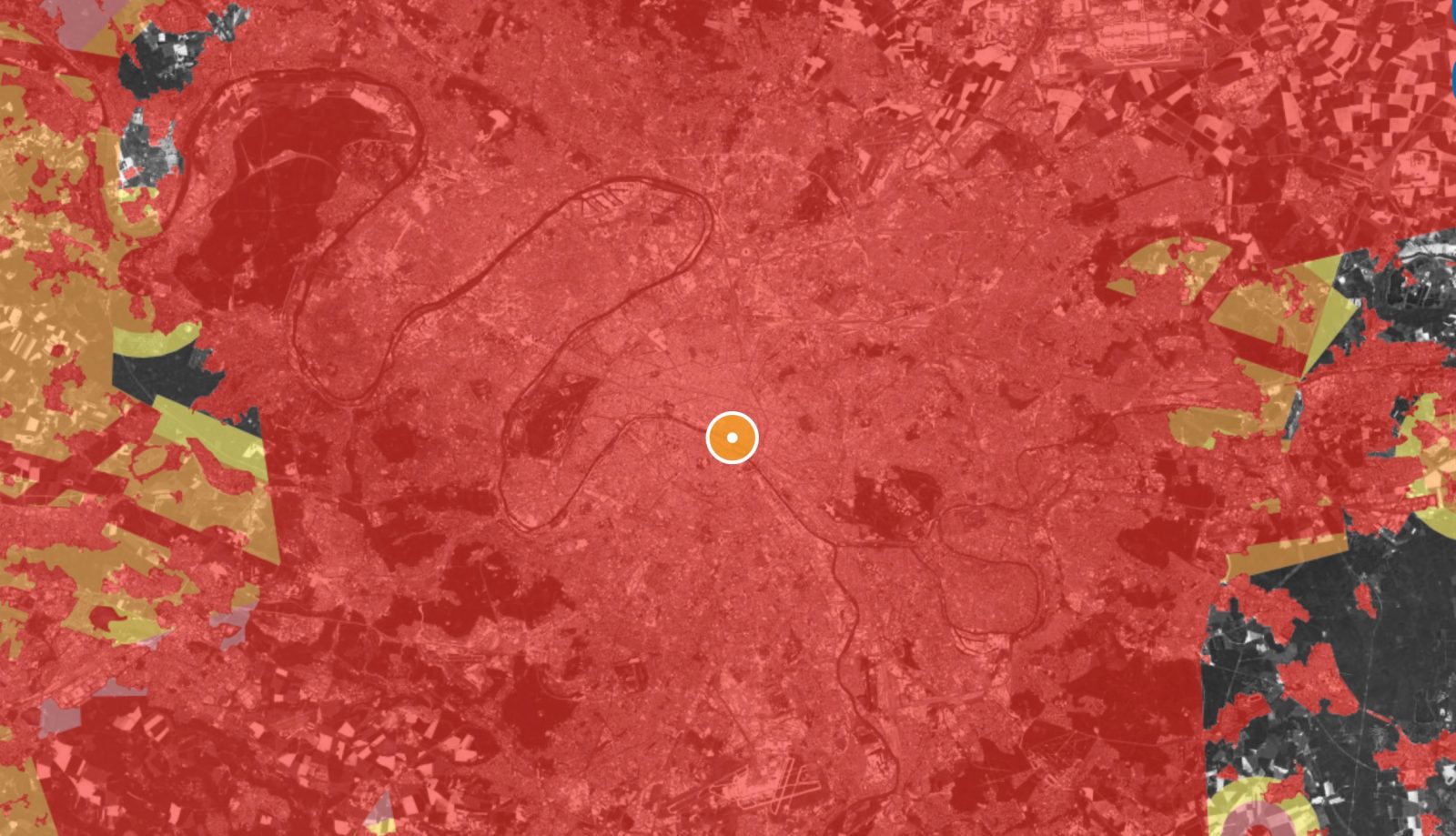
Rising global temperatures are forcing authorities in France to limber up the habitual straight-jacket restrictions on operating drones in Paris, and allow designated craft to hover on high to hunt out spots in and around the capital where people can cool off.
As anybody who has ever researched the exploit knows, piloting a UAV in the City of Light – we’ll pause for those who’ve ventured the experience to titter bitterly – is a virtual nonstarter. The resource allowing users to see which areas of France permit flight – or more frequently don’t – paint the capital and its surrounding region in an unrelenting hue of prohibited red. But with that color now also representing summer temperatures that continue rising, moves have been made to allow national weather service Météo France fly drones around Paris to uncover havens of relative cool that may offer people a bit of respite.
Read: A $119 price among new Paris Olympics air taxi details revealed
Some residents and visitors to Paris are now hearing the unfamiliar whine of drones overhead – especially if they happen to be in the parks, squares, and unpaved public areas that tend to remain cooler when temperatures in the city rise.
Those so-called îlots de fraîcheur identified by onboard sensors have been added to an online map of venues scoring higher chill factors – mostly indoor places like churches, museums, and air conditioned hangouts like movie theaters.
Among the over 800 outdoor havens of relative cool being identified with the help of drones are 565 parks or other green spaces, and 150 areas that remain open during nights when the heat refuses to abate, according to the Paris agency overseeing the project.
Read: France approves police drone response to rioting despite public opposition to UAV surveillance
Initial drone flights in Paris have already established that the difference in temperatures can be considerable even in smaller spaces that haven’t been paved – a major factor in heat intensification and retention – compared to surrounding areas. Those spots also cool off to a greater degree, and faster, than the rest of the city when the sun sets.
Meanwhile, as expert Cécile Demunck told BTFMTV, use of drones in Paris have also allowed officials to document the cooler air in those areas extending up to 50 meters high, which may help reduce infiltration of ambient heat through circulation. She says UAVs have already become an asset for weather experts – the capital’s usual hostility to the craft notwithstanding.
“The advantage of drones is they allow us to us to take small samples of air at different altitudes above the ground, then monitor these (temperature) levels throughout the day,” says Demunck, the head of studies at the National Center of Meteorological Research.
FTC: We use income earning auto affiliate links. More.




Comments